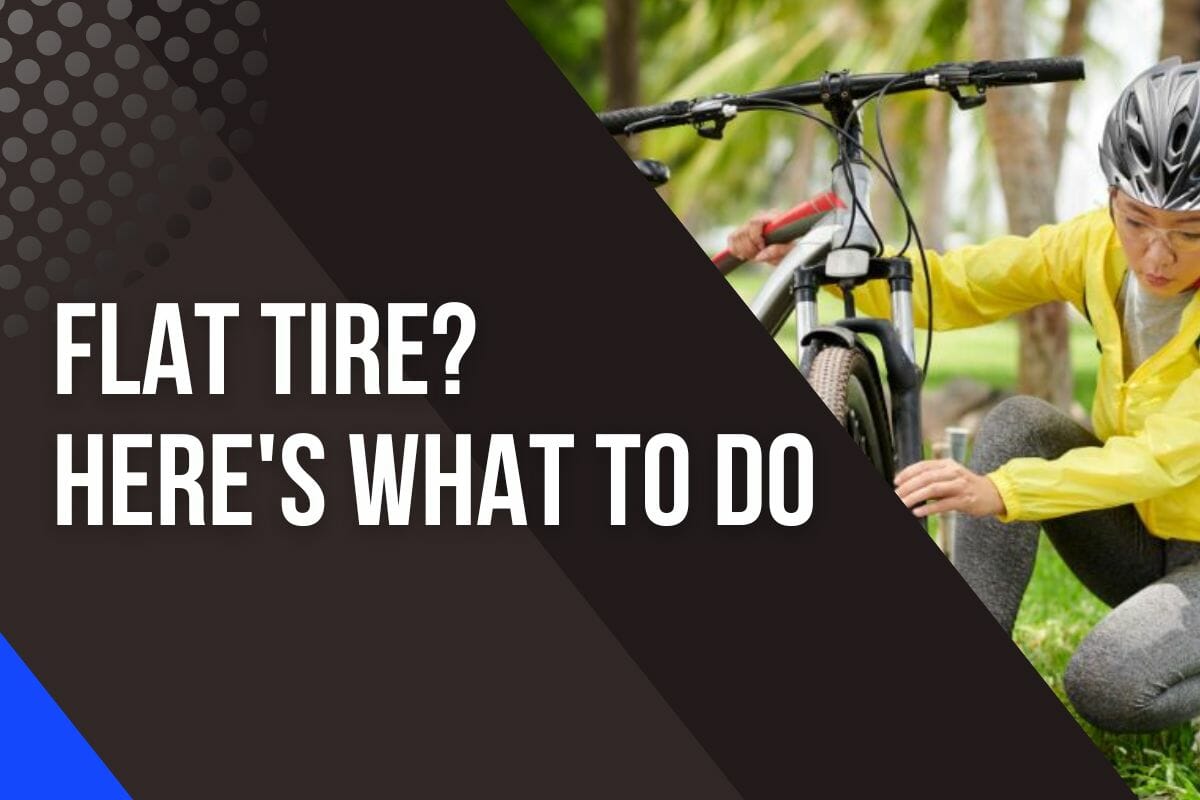What To Wear Mountain Biking: Essential Gears For The Trails
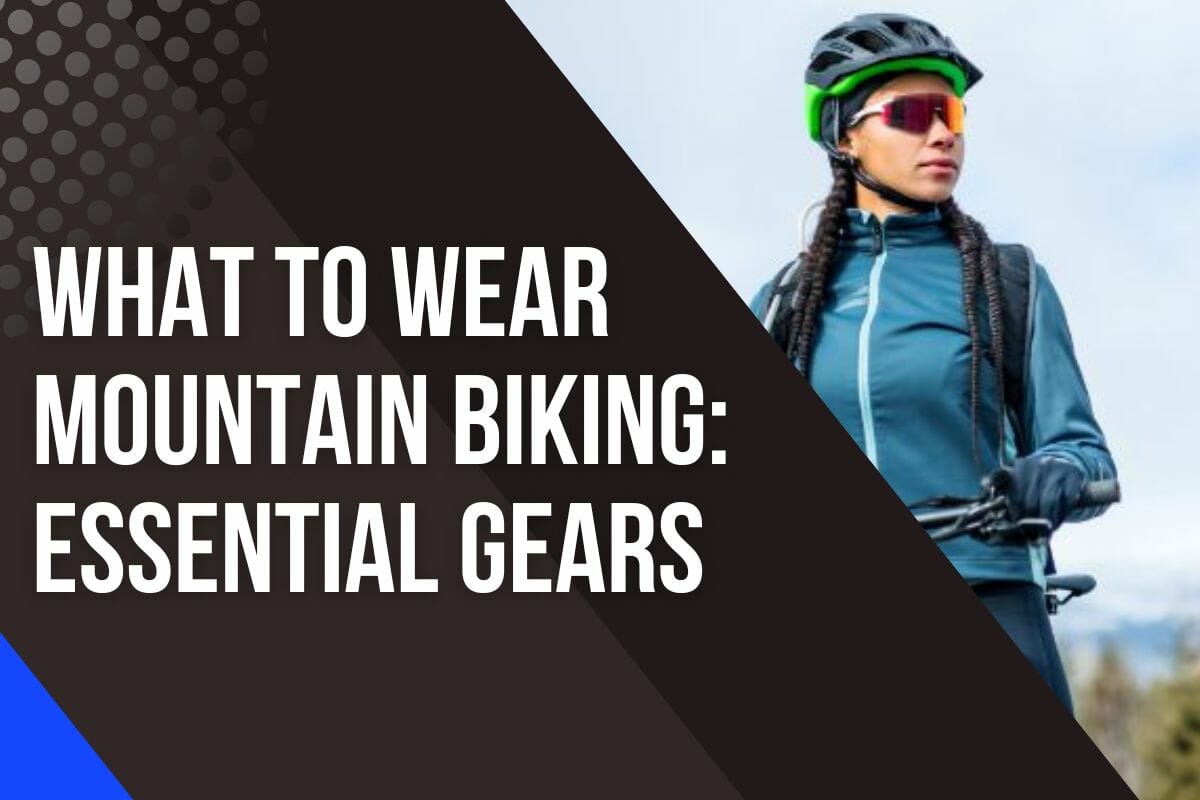
Are you planning a mountain biking adventure and wondering what to wear?
As someone who has been cycling for more than 10 years, I know firsthand that choosing the right clothing for mountain biking is crucial for your comfort and safety.
In this article, we’ll explore what to wear for mountain biking, including other essential items you need to have a safe and enjoyable ride.
Whether you’re a seasoned pro or a beginner, we’ve got you covered with tips and recommendations for your next adventure on the trails.
Let’s dive in!
Do You Need Dedicated Mountain Biking Clothes?
If you’re planning on going on longer rides or tackling more challenging terrain on your mountain bike, it’s essential that you consider what you wear (check out the complete packing checklist on this post).
Mountain biking clothes are much more than just a fashion choice – they can play a significant role in the success and safety of your ride, especially in competitive events like cross-country and enduro races.

The right clothes can make all the difference between an enjoyable ride and a frustrating, uncomfortable one.
Even more importantly, wearing proper gear can help prevent injuries. When you’re on rough terrain, you want clothes that protect you from branches, scrapes, and falls.
Dress For The Occasion
Think about the type of terrain you’ll be riding. Cross-country trails are relatively smooth and flat, while downhill runs can be steep and technical.
If you’re riding on rough terrain, extra protection such as knee and elbow pads might be necessary.
On the other hand, if you’re cycling on a well-maintained track, you might not need as much protection.
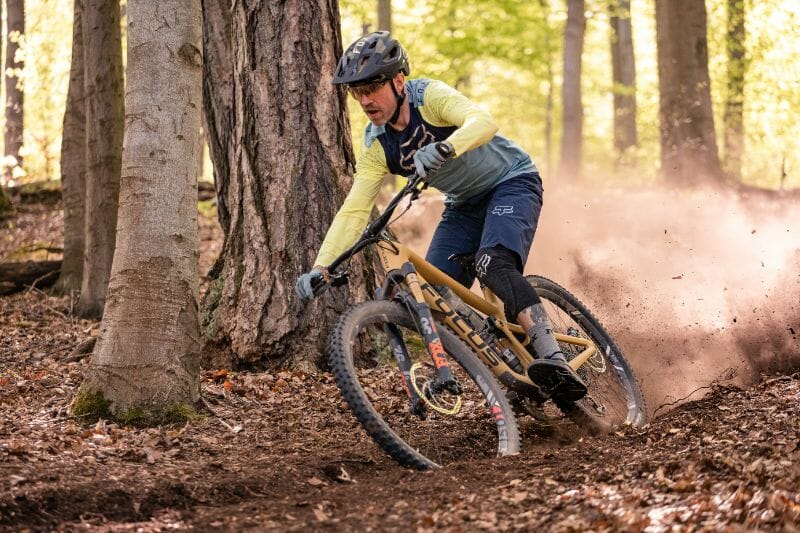
Another crucial factor is the weather conditions. If it’s cold, don’t forget to layer up and wear a lightweight jacket that gives you flexibility and warmth.
Alternatively, if it’s hot, consider breathable fabrics that will help you to regulate your body temperature. For wet conditions, waterproof clothing and gear can make all the difference.
Wearing appropriate gear for different rides can enhance your experience and minimize risk while on the trail.
Mountain Bike Helmet
A helmet is undoubtedly the single most important piece of protective gear for mountain biking that can reduce head injury risk by 80%. (1)
When we hit those singletrack trails, we’re faced with rocks, roots, and trees that could cause us to crash at any moment. That’s why having a reliable helmet is crucial.
Mountain bike helmets can be broken down into two main categories:
- Full-face helmets are popular with downhill, enduro, and BMX riders
- Half-shell helmets are the standard helmet for cross-country, small, light, and airy
Unlike road cycling helmets, most mountain bike helmets come with a detachable visor or peak that provides additional coverage.
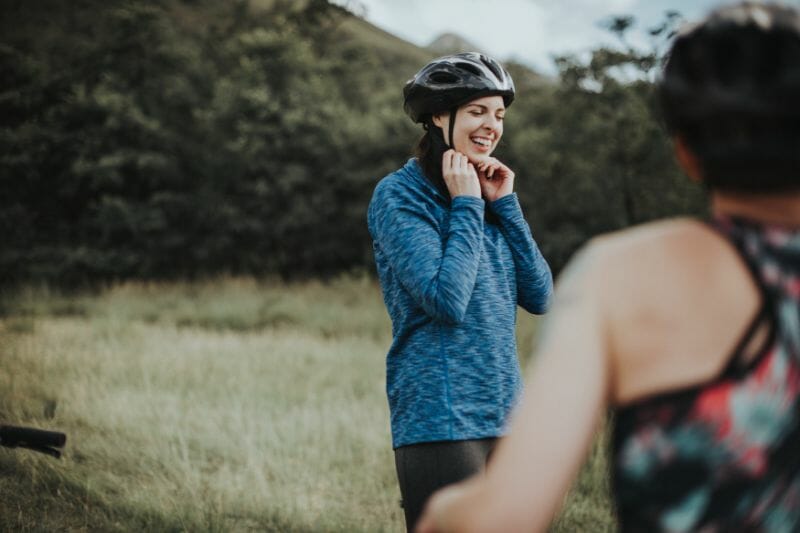
This helps to protect your eyes from the glaring sun and your face from low-hanging branches and rain.
If you’re into more extreme types of mountain biking like downhill riding or enduro racing, you might want to consider a full-face helmet.
These helmets offer the most coverage and protection of all designs, but they do tend to struggle with ventilation. So, save them for those days when descending is your primary focus.
Additionally, ensure that the helmet meets certification standards approved by organizations such as the MIPS, CPSC (Consumer Product Safety Commission), or ASTM International.
Smith Convoy
The Smith Convoy is my go-to choice for mountain biking helmet. It offers an affordably priced entry-level option that comes packed with features.
One such feature is its MIPS (Multi-directional Impact Protection System) technology, which is designed to protect your head from rotational forces in the event of a crash.
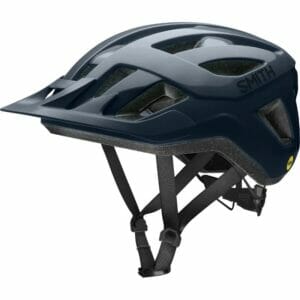
Good coverage is also a major consideration when choosing a helmet, and the Smith Convoy doesn’t disappoint in this regard. With ample coverage on the sides and rear, I can ride confidently knowing I’m well-protected.
But protection isn’t all the Smith Convoy has to offer. This helmet also boasts 20 vents for optimal airflow, ensuring your head stays cool and comfortable during even the most strenuous rides.
Mountain Biking Eyewear
Mountain biking eyewear not only provides sun protection but also shields your eyes from dirt and dust, which can be a major distraction throughout the trail.

Unlike road cycling sunglasses, the ones for mountain biking are usually interchangeable or self-adjusting.
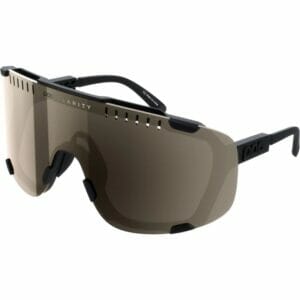
With the shadows and sun constantly playing peek-a-boo, you’ll want glasses with tinted lenses to reduce glare and moderate contrast between bright and dark conditions.
One of my favorites for mountain biking eyewear is the POC Devour Sunglasses. These glasses are designed specifically for mountain biking with a durable and lightweight frame that can withstand rough terrain.
Now, if you’re all about full-face helmets, then the best mountain bike goggles are the way to go. Not only are they more secure than glasses, but they also protect your eyes from all the elements.
Imagine cruising down a rocky descent and your glasses bouncing off or not being able to shield your eyes from rain and mud flicked up by the wheel in front of you. No thanks!
Mountain Biking Jerseys
Mountain biking jerseys are an essential piece of clothing for any experienced rider. Not only do they offer comfort and style, but they also improve your performance on the trails.
One of the most important factors in choosing a mountain bike jersey is the type of technical material it is made from.
The best materials for mountain biking jerseys are those that are specifically designed for durability, quick drying, and breathability in rough terrain.
Unlike road cycling, I personally prefer a looser fit jersey when mountain biking like the Troy Lee’s Flowline Jersey to allow me more room for movement.
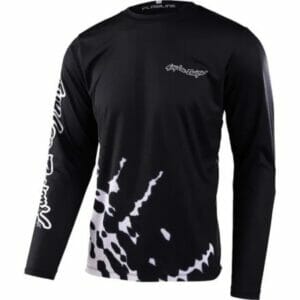
Long-sleeved mountain bike jerseys are a great option for riders who want added coverage from brush and branches. They also provide protection from the sun, especially on rides that take place during peak hours.
Quick-Drying Shorts
Quick-drying shorts are a game-changer for any mountain biker. These shorts are designed to keep you comfortable and dry during intense rides,
I personally wear the POC Essential MTB Shorts, as many other cool riders do. This short is exactly what every mountain biker needs.
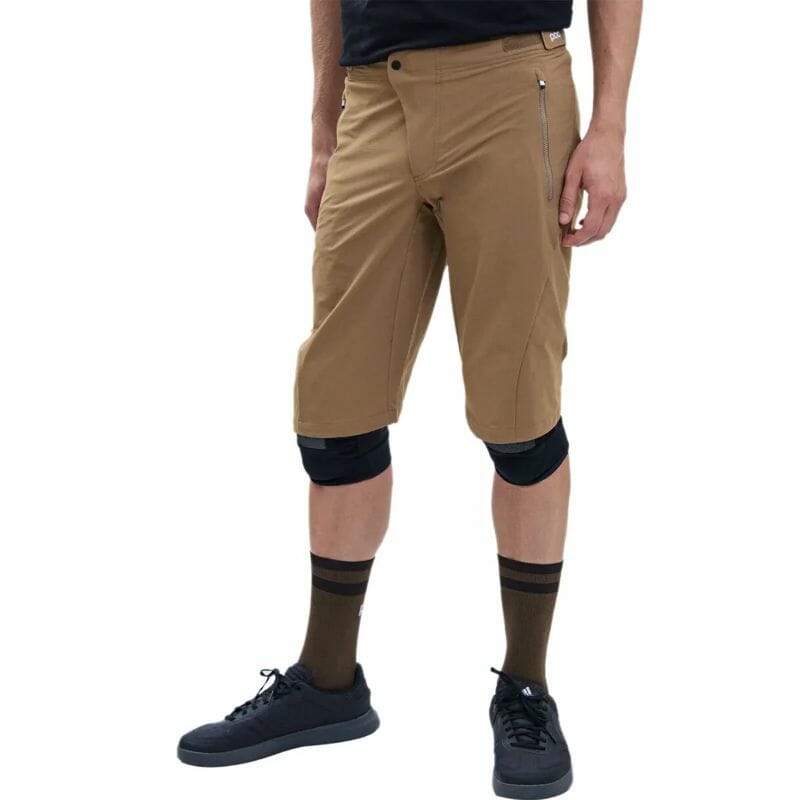
Not only are they comfortable and stylishly designed, but they also come with quick-drying fabric that keeps you sweat free and dry even when you’re out on a long journey or tackling difficult routes.
This is particularly important during hot and humid conditions or on rides when you anticipate getting sweaty.
Many riders love wearing baggy pants over their cycling shorts. These guys usually ride downhill and are enduro-focused.
Padded Liners
Padded liners (or Chamois or shammies) are probably the second most important piece of gear (after a helmet) for mountain biking.
My favorite is DHaRCO Party Pants Liner Shorts. They are designed to be worn underneath your mountain biking shorts or trousers and serve as a barrier between your body and the bike seat.
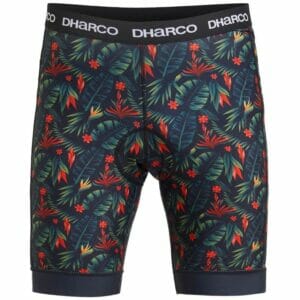
One of the main benefits of padded liners is that they help to reduce friction between your nether region and the saddle.
This is especially important during longer rides where chafing and discomfort can become a real issue.
By providing extra cushioning, padded liners distribute pressure evenly across your buttocks, hips, and thighs, reducing the risk of pain and injury.
Mountain Bike Gloves
Mountain bike gloves are an essential piece of gear for any mountain biker and I personally always wear them.
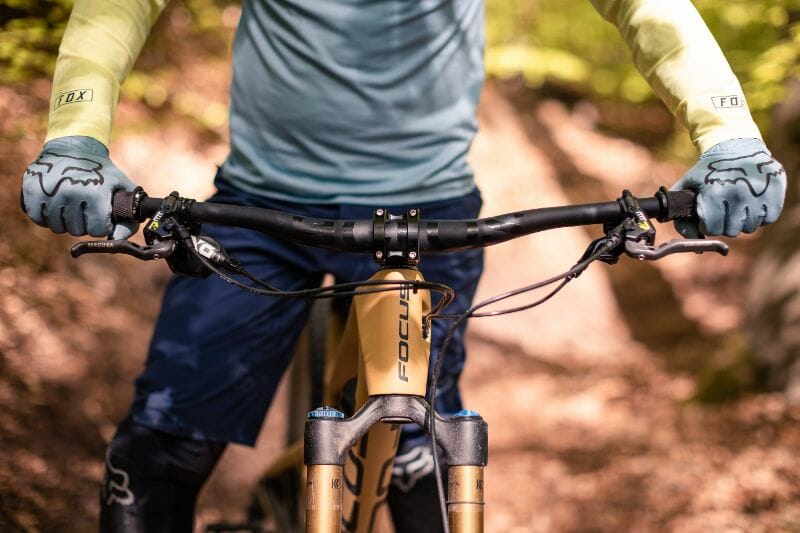
They not only protect your hands from scrapes and cuts but also offer increased grip on the handlebars.
When choosing a mountain bike glove, it’s important to consider durability and grip. A durable glove will last longer and save you money in the long run. Look for gloves with reinforced stitching and durable materials.
I highly recommend HANDUP Gloves. They’re built for heavy duty and last me many years.
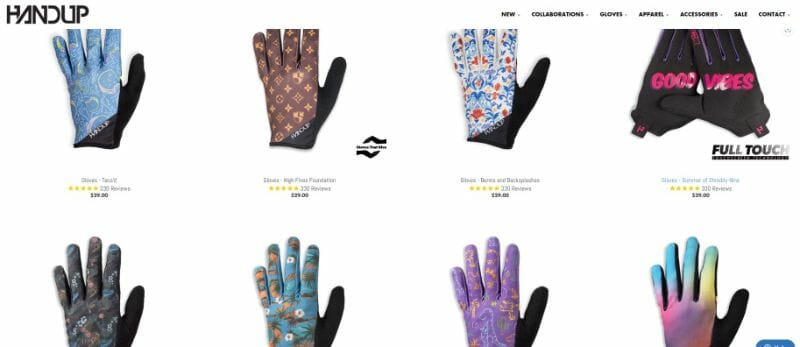
Windproof Jacket
Wind jacket protects against wind chill and wards off light rain and moisture. Investing in a high-quality wind layer is a smart choice for riders looking to stay comfortable and protected while hitting the trails.
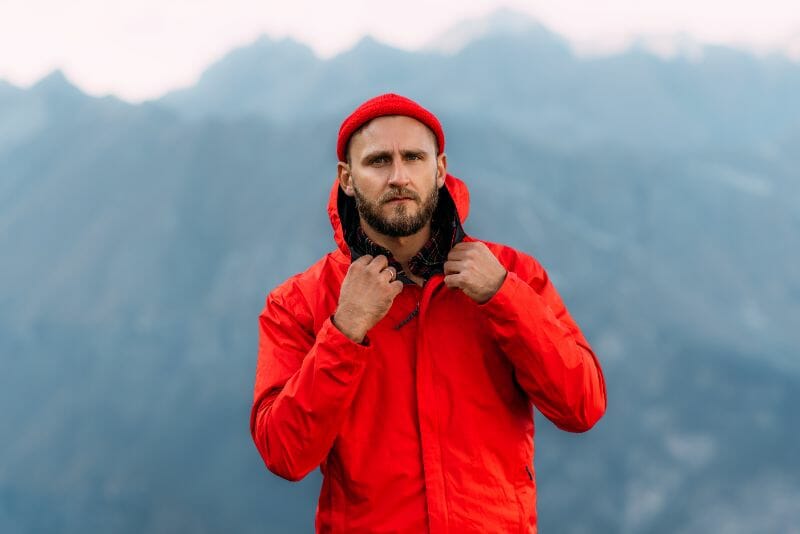
Lightweight jackets are a great option for riders who are looking for something that is water-resistant but also breathable. These jackets typically weigh less than other options and can easily be packed away when not in use.
I personally love my Patagonia Houdini Jacket and it has been an essential piece whenever I’m mountain biking.
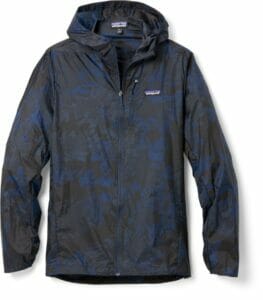
The best part about this jacket is its weight—it’s so light you’ll hardly feel it packed away. It provides adequate protection against light rains, plus repels the cold chill of unexpected winds.
Mountain Bike Socks
Wearing the right socks can help prevent blisters, protect against pedal slides, and provide extra cushioning for your feet during aggressive rides.
Long socks are a popular choice among mountain bikers, especially for those who ride in technical terrain.
They offer additional protection to the ankle and lower leg from pedal slides as well as trailside brush. Long socks also help to keep the legs warm in cold weather conditions which can prevent cramping.
Darn Tough is a favorite brand among mountain bikers (including me) for its high-quality, durable socks. The brand is known for its lifetime warranty, which means they will replace any sock that wears out, no matter how old it is. No joke!
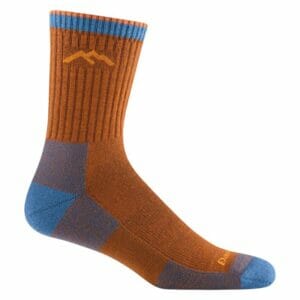
Mountain Bike Shoes
Having the right shoes is just as important as having the right bike. Mountain bike shoes provide the necessary grip and protection required for optimal performance and safety while riding.
There are two main types of mountain bike shoes: flat and clipless.
For mountain biking, I always use flat shoes as it’s more comfortable for me.
They provide a platform for the foot to rest on and offer maximum control, while clipless shoes attach to the pedals for a secure hold.
My go-to flat shoes are the Pearl iZumi Alp-x Summit, which provides excellent grip and comfort on rough terrain. It is well-known among avid mountain bikers to be versatile and highly durable.
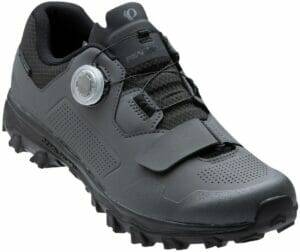
They are a perfect match for riders who prefer flat pedals and want added control and confidence on their rides.
Mountain Biking Pads and Armor
As you venture into more extreme styles of riding such as downhill or park riding, you’ll need thicker and longer pads that offer more coverage. For example, knee pads are essential for experienced riders whereas newcomers may opt for elbow pads too.
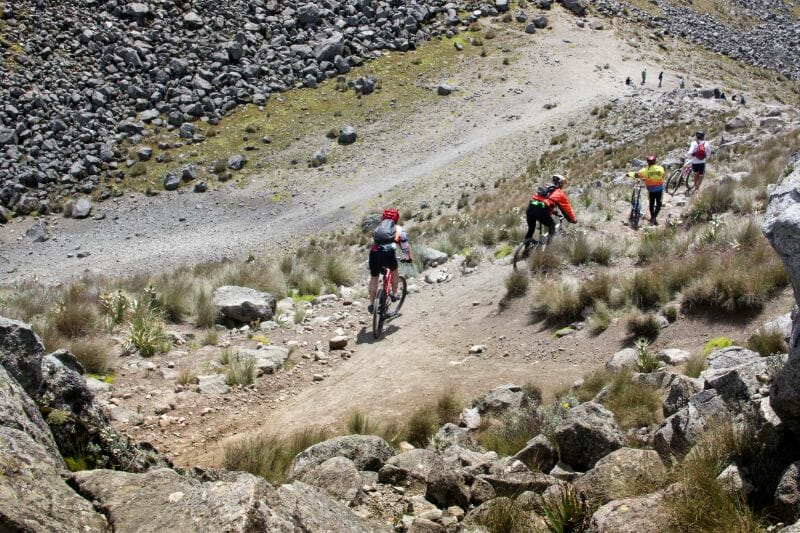
It’s also important to note that trail and cross-country riders should go with lightweight padding that can provide ample protection without compromising your aerodynamics in the process.
Additionally, when tackling long downhill stretches, many experienced riders forego their padding until the last minute – yielding a cooler ride.
Fox Enduro Sleeve Knee Pads
Since I had experience working in the high-risk oil and gas industry, I never compromise on safety. This habit makes me never forget to wear knee pads whenever I hit the trails.
The Fox Enduro Sleeve Knee Pads and Fox Launch Pro Knee Guard are my favorite choice for protection and comfort.
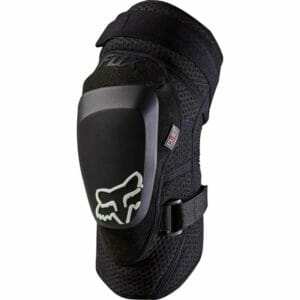
One of the key benefits of these knee pads is the good coverage they provide. With a sleeve-style design, they cover a large portion of your knee and shin, preventing injuries from rough terrain and obstacles that may come your way.
They also stay in place throughout your ride, so you won’t have to worry about any slippage or readjusting.
A Hydration Pack
One of the main benefits of wearing a hydration pack during mountain biking is that it allows you to carry water easily while riding. You won’t have to stop to drink from a bottle or worry about dehydration during lengthy rides.
Hydration packs come with water reservoirs and a hose, which makes it easier to take a sip of water without having to remove the pack. This is especially helpful when riding technical terrain where you need both hands on the handlebars.
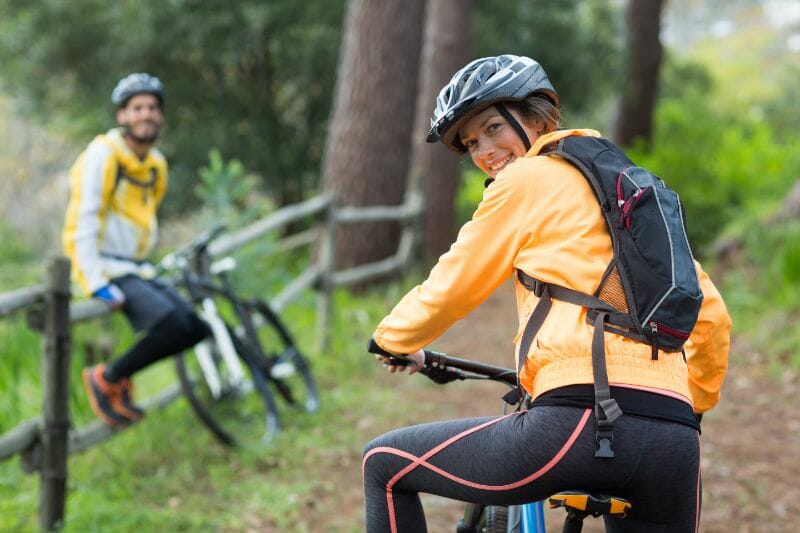
When shopping for a hydration pack, think about the length of your rides. If you’re planning to go for a short ride, a hip pack with a small water reservoir is a great option.
These types of packs provide maximum breathability and are ideal for riders who don’t need to bring a lot of items on their ride.
On the other hand, if you are planning on going for long rides or races, a backpack-style hydration pack with a larger water reservoir is a better option. These packs can carry more water and other essentials such as snacks, a multi-tool, a pump, and spare tubes.
Camelbak (women’s) and Gregory (women’s) are some of the most popular ones.
I personally always use my Osprey Siskin 12L backpack-style hydration pack and not a big fan of the hip-style ones.

Cold-Weather Clothing for Mountain Biking
As the temperature dips, it’s crucial for mountain bikers to dress in layers that will protect them from the cold and windy weather.
This means wearing specialized clothing that will not only keep riders warm but also provide protection from unpredictable weather conditions.
In this section, we will discuss the cold-weather clothing options for mountain bikers including waterproof trousers and onesies, insulating layers, arm/leg warmers, and hats, to help you stay warm and comfortable on the trail.
Waterproof Trousers
Whenever I hit the trails for some mountain biking fun during wet climates, I always make sure to gear up with my trusty waterproof trousers.
Not only do they keep me dry and cozy, but they also provide a solid layer of protection against any mud or water splashes that might come my way.
It’s important to remember that there is a difference between water-resistant and waterproof trousers. While water-resistant options can keep some moisture at bay, they simply can’t compare to the level of protection that waterproof trousers offer.
These bad boys can handle the heaviest downpours for extended periods of time, but they can also be a bit less breathable, which can be a bummer in hotter weather.
Waterproof Onesies
Mountain biking can often be a treacherous affair when the weather turns bad (statistically speaking, mountain biking is more dangerous than skiing). One of the most effective pieces of winter riding wear is the mountain bike onesie, combining the protection of a waterproof jacket and pants in one piece.
Mountain bikers looking to stay dry while out on the trails can benefit from this innovative piece of apparel.
It eliminates the issue of water spray getting in through the gap created between the jacket and pants, leading to an uncomfortable level of wetness in cold weather.
Insulating layers
Insulating layers help to keep you warm and dry by wicking sweat away from your skin and preventing moisture buildup.
For the upper half of your body, a long underwear top or lightweight fleece jacket made of wool, polypropylene, or nylon is ideal.
It’s important to avoid wearing cotton as it retains moisture and can lead to chill-inducing dampness. These insulating layers are perfect for moderate rides and can be paired with an outer layer for added protection.
Arm/Leg Warmers and Hats
Arm/leg warmers and hats provide a versatile and comfortable layering option that can help keep you warm during the colder parts of your ride without sacrificing your ability to cool down when needed.
For hats, you may want to consider wearing cycling caps instead as they are made specifically for cyclists.
Head over to our dedicated article about how to dress for cold-weather cycling to get the complete list of essential gear for winter riding.
Hitting The Trails
As this sport can be dangerous, comfort, safety, and functionality should be your top priorities when choosing what to wear for mountain biking.
Make sure you invest in quality gear that will protect you from the elements and potential falls, and don’t forget to layer appropriately for changing weather conditions.
And always remember to have fun and enjoy the ride!





